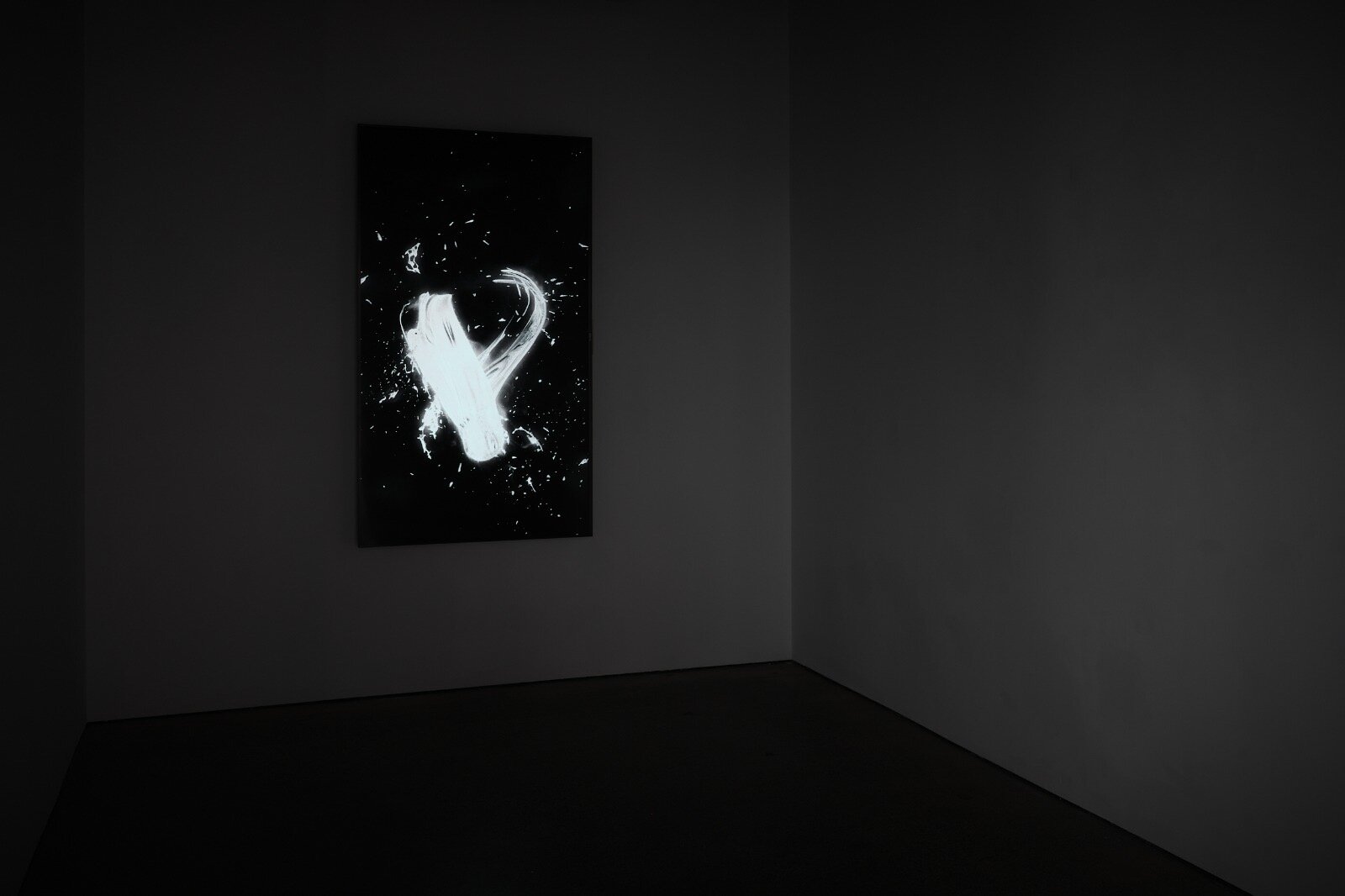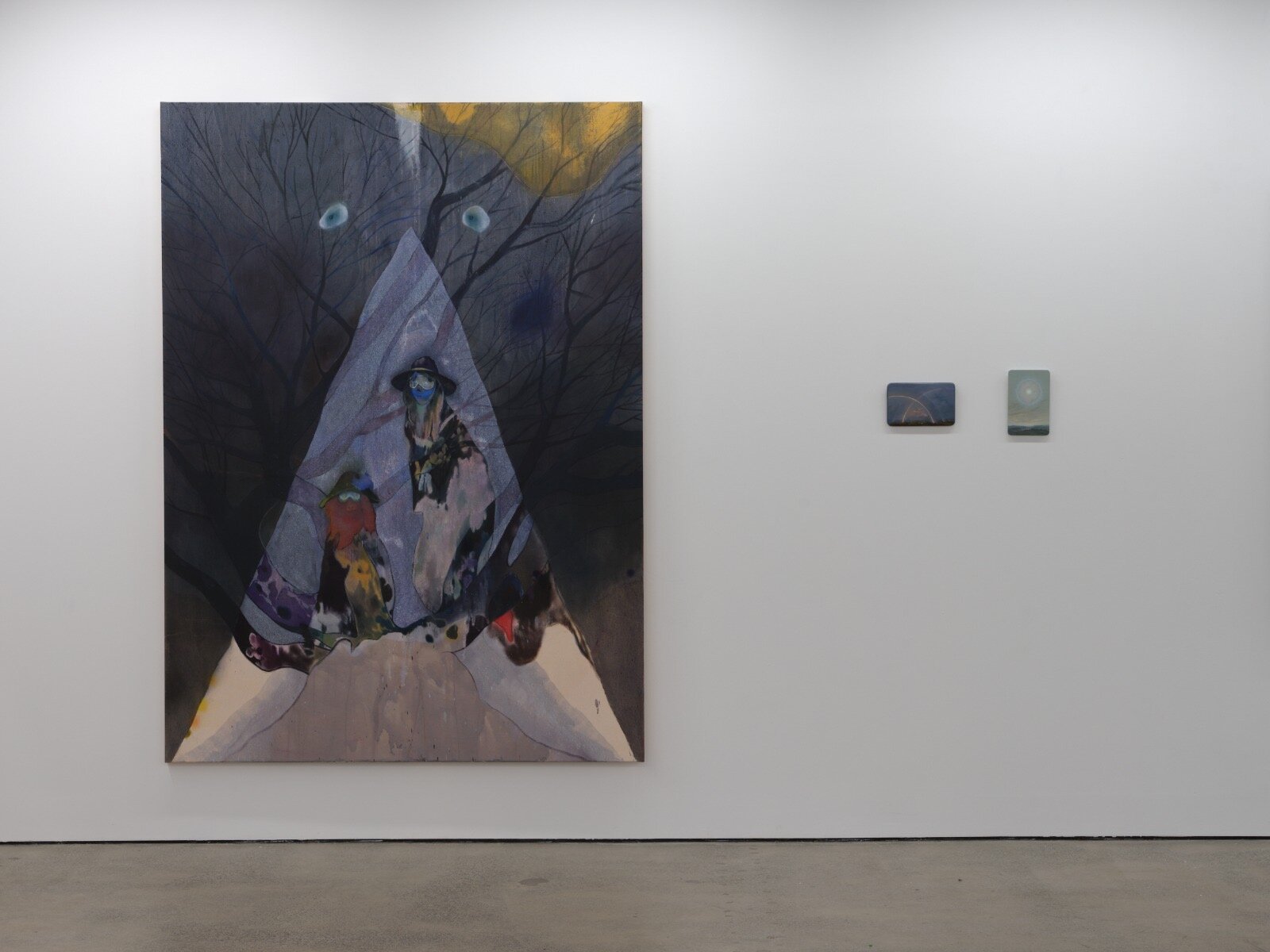Doors of Perception
Visions Gallery, Auckland, 2021
Doors of Perception explored the feelings and fantasies provoked by the inertia of the early pandemic. Curator Pippa Mott proposed a contemporary view of psychogeography – the influence of place on human behaviour and emotion. With the obstruction of movement on a global and local scale, immediate habitats took on new meaning whilst, for some, interior worlds flourished. The show considered notions of home and the natural world, borders and boundaries, wanderlust and inward retreat, portals and parallel worlds.
Featured Artists
Georgia Arnold, Joyce Campbell, Jacobus Capone, Ben Cauchi, Tamara Dean, Dale Frank, Star Gossage, Emily Karaka, teamLab, Angela Lane, Adam Lee, Shana Moulton, Isadora Vaughan
Doors of Perception proposes a contemporary view of psychogeography – a term coined by the Marxist theorist Guy Debord in 1955 to classify the unique influence of place on human behaviour and emotion. Proponents of psychogeography advocate the dérive, the practice of drifting through an urban environment, without a destination in mind, to enhance one’s connection to a city. But what happens when the ‘drift’ is denied? The works included here do not depict the urban environments favoured by psychogeographers, with their crowds and cacophonies. Rather, they emphasise the natural world, domestic environments, mystical realms, and landscapes of the mind.
Uniting an array of works made over the past two decades, Doors of Perception reflects on the psychic impact of inertia or stasis, particularly as a consequence of the present pandemic, which has led to the radical diminishment of local and global movement. Due to the implementation of strict border controls, Australasia has managed to limit viral transmission and mortality rates. The situation has had a curious impact on psychic distance – that is, the perceived difference or gap between objects or places. Much of the time, we have felt far away from the disaster, and our seclusion and ‘wilderness’ have seemed amplified.
Photographic works by Joyce Campbell and Jacobus Capone record physical and imagined journeys to extreme and remote environments with impeccable poetry. Capone takes as his subject the polar extremes of Tasmania and the Norwegian archipelago of Svalbard. Southern Portal (2018) and Northern Portal (2018) are ‘residues’ from pilgrimages to islands on opposite ends of the globe. Campbell’s Ryukyu II (2003–11) investigates the Mariana Trench, the deepest part of the world’s oceans and the lowest elevation of the surface of the earth’s crust. Works from her series Process Study (2005) dance between the microcosmic and the macrocosmic, small crystalline structures transforming into otherworldly portals.
Emily Karaka’s triptych Rāhui (2021) explores parallels between the prohibitions placed on access to ecosystems threatened by ‘kauri dieback’ in Aotearoa, and lockdowns and border controls drawn up to combat the global health crisis. Standalone sculptures by Georgia Arnold evoke gardens as sites of sanctuary and play. At the same time, they enact an arena of barricades, redolent of the boundaries and loopholes that we have become so accustomed to thinking about. Star Gossage’s ethereal painting, Beside the Sea, Our Pakiri (2017), depicts figures in repose by the ocean, capturing the restorative properties of natural environments (to which those who could flocked in recent times). Connections and disconnections with nature are further explored by Tamara Dean, whose photographic works, Beneath the Surface (2015) and Messmate Stringybark (Eucalyptus Obliqua) Summer (2018), portray humans as primordial inhabitants of aquatic ecosystems.
Grounded as we have been in our immediate landscapes, particularly during lockdowns, fluctuations in weather and the changing of the seasons have become more pronounced, and the act of observing has become one of intimacy. A series of oil on wood studies of meteorological phenomena by Angela Lane pay homage to the miniaturist landscape backgrounds of late 15th and early 16th-century Dutch paintings. In Parhelion (2016), concentric halos emanate from a ghostly sun that hovers over a wintry landscape, while Phenomenon #25 (double binary rainbow) (2019) features an intersecting arc of rainbows that blaze across a heavy sky.
A monumental painting by Adam Lee, Tender Mantle (2019), depicts strangers in a strange land. They shelter under the bare branches of a deciduous tree, which, with beady eyes, bears witness to their journey into darkness. The work draws on the artist’s longstanding interest in the passage of time, spiritual pilgrimage, and a nomadic sense of home. Isadora Vaughan’s beguiling bronze Dial (2018) is similarly evocative of the transcendent, having the power and presence of an ancient relic. Ben Cauchi deftly employs early photographic techniques to produce images that whisper at liminal spaces and contact with the spiritual realm. Indeed, a revival of occult practices was reported as the uncertainty of the pandemic inspired some to seek alternative means of escape or understanding.
With its tragicomic title, Dale Frank’s After all these years every April he would still visit the grave of Wendy Moore who he knew only briefly from school (2018) evokes a different beyond, delving into the transportive power of nostalgia and sentimentality. Our formative years, and the spaces in which they play out, hold a disproportionate grip over our adult selves. The painting itself has a chameleon-like surface that beckons viewers into their own states of reflection. Enso – Cold Light (2018) by the Japanese art collective teamLab makes reference to ensō, the Zen practice of drawing a circle with a single brushstroke, which represents enlightenment, truth, equality, and the cosmos. Gesture and mark are an externalisation of inward retreat and focus, and invite a state of meditative calm.
Lastly, Shana Moulton’s surrealist video work The Undiscovered Drawer (2013), with its deliberately dowdy aesthetic, presents a playful exploration of the domestic sphere as a new frontier of growth and self-discovery. Employing the visual language of new age spirituality and self-care (facial massagers, a ‘neti pot’, and an ergonomic keyboard all make appearances), the artist examines the intersection of middle-class aspiration, individualism, and capitalism. These themes achieve even greater pertinence when we consider the impact of the pandemic on online shopping behaviours and the commodification of well-being. With the aid of her ‘magnifying makeup glasses’, Moulton’s alter ego Cynthia unlocks her third eye and becomes truly free. In the absence of certain kinds of social, physical, and experiential stimulation, thought and spirit may venture more willingly into the unknown.



